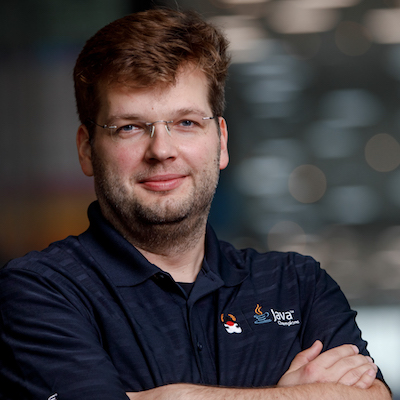Debezium Blog

It’s my pleasure to announce the release of Debezium 1.1.0.Beta1!
This release adds support for transaction marker events, an incubating connector for the IBM Db2 database as well as a wide range of bug fixes. As the 1.1 release still is under active development, we’ve backported an asorted set of bug fixes to the 1.0 branch and released Debezium 1.0.1.Final, too.
At the time of writing this, not all connector archives have been synched to Maven Central yet; this should be the case within the next few others.

This article is a dive into the realms of Event Sourcing, Command Query Responsibility Segregation (CQRS), Change Data Capture (CDC), and the Outbox Pattern. Much needed clarity on the value of these solutions will be presented. Additionally, two differing designs will be explained in detail with the pros/cons of each.
So why do all these solutions even matter? They matter because many teams are building microservices and distributing data across multiple data stores. One system of microservices might involve relational databases, object stores, in-memory caches, and even searchable indexes of data. Data can quickly become lost, out of sync, or even corrupted therefore resulting in disastrous consequences for mission critical systems.
Solutions that help avoid these serious problems are of paramount importance for many organizations. Unfortunately, many vital solutions are somewhat difficult to understand; Event Sourcing, CQRS, CDC, and Outbox are no exception. Please look at these solutions as an opportunity to learn and understand how they could apply to your specific use cases.
As you will find out at the end of this article, I will propose that three of these four solutions have high value, while the other should be discouraged except for the rarest of circumstances. The advice given in this article should be evaluated against your specific needs, because, in some cases, none of these four solutions would be a good fit.

Outbox as in that folder in my email client? No, not exactly but there are some similarities!
The term outbox describes a pattern that allows independent components or services to perform read your own write semantics while concurrently providing a reliable, eventually consistent view to those writes across component or service boundaries.
You can read more about the Outbox pattern and how it applies to microservices in our blog post, Reliable Microservices Data Exchange With the Outbox Patttern.
So what exactly is an Outbox Event Router?
In Debezium version 0.9.3.Final, we introduced a ready-to-use Single Message Transform (SMT) that builds on the Outbox pattern to propagate data change events using Debezium and Kafka. Please see the documentation for details on how to use this transformation.

Did you know January 16th is National Nothing Day? It’s the one day in the year without celebrating, observing or honoring anything.
Well, normally, that is. Because we couldn’t stop ourselves from sharing the news of the Debezium 1.1.0.Alpha1 release with you! It’s the first release after Debezium 1.0, and there are some really useful features coming with it. Let’s take a closer look.

Today it’s my great pleasure to announce the availability of Debezium 1.0.0.Final!
Since the initial commit in November 2015, the Debezium community has worked tirelessly to realize the vision of building a comprehensive open-source low-latency platform for change data capture (CDC) for a variety of databases.
Within those four years, Debezium’s feature set has grown tremendously: stable, highly configurable CDC connectors for MySQL, Postgres, MongoDB and SQL Server, incubating connectors for Apache Cassandra and Oracle, facilities for transforming and routing change data events, support for design patterns such as the outbox pattern and much more. A very active and welcoming community of users, contributors and committers has formed around the project. Debezium is deployed to production at lots of organizations from all kinds of industries, some with huge installations, using hundreds of connectors to stream data changes out of thousands of databases.
The 1.0 release marks an important milestone for the project: based on all the production feedback we got from the users of the 0.x versions, we figured it’s about time to express the maturity of the four stable connectors in the version number, too.